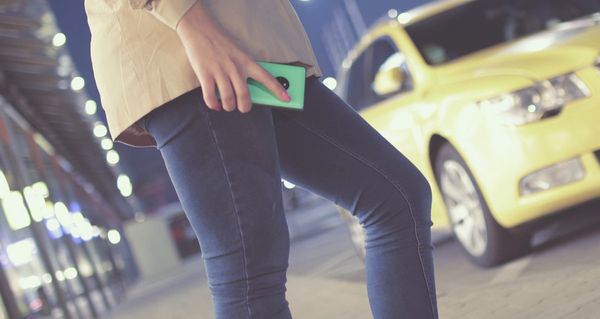Stop trying to resurrect the great actors of the past for cameos in your mediocre movies. I get it, the appeal of a nostalgic character from a classic movie or a renowned historical figure drives more people to your movie, thus generating more profit. No one can blame a movie studio for operating itself as any successful business does, but there's a pressing issue at hand when a movie studio's quest for profit impedes on the work and legacy of a deceased artist.
Unfortunately, there are plenty of tasteless instances of this kind of practice in the modern film industry, each with its own level of moral implications.
In 2016, for example, "Rogue One: A Star Wars Story" used a computer-generated likeness of Peter Cushing (who has sadly passed since the original "Star Wars" trilogy) to bring back Grand Moff Tarkin in a brief throwback to his role in the original films. His presence is first seen facing away from the camera, his face in the spaceship's reflection, slightly distorted yet entirely familiar. The doozy comes when the figure turns to face the camera, his face nearly identical to Cushing's yet strangely plastic in an off-putting way.
Rogue one - All Grand Moff Tarkin scenes. www.youtube.com
Cushing's representation in "Rogue One" clearly falls within the uncanny valley, a term commonly used to refer to an android or audio/visual simulation that appears almost human but is not convincingly realistic. The result is an unsettling feeling in the pit of your stomach, maybe even a grimace. Despite the incredible strides of technological advancement we've witnessed over the years, visual effects still aren't quite at the level they need to be to generate an entirely convincing portrayal of a human. Sure, they can handle the goofy, stylized version of reality in animated films, but to aim for absolute realism is exponentially more difficult and has yet to been proven possible.
When the best a studio can do is resort to an uncomfortable, unrealistic simulation of an actor's performance, the costs start to outweigh the benefits.
So who does benefit from digitally recreating an actor's likeness?
Besides the obvious fanservice of Cushing in "Rogue One", the act of reviving deceased talent is frequently used by brands to add gravitas to their commercials.
In 2014, Dove Chocolate released an advert starring a digitally recreated Audrey Hepburn, paying clear homage to "Breakfast at Tiffany's" with Hepburn's song "Moon River" laid underneath. In it, Hepburn's image gracefully reaches into her bag and pulls out a box of milky Galaxy Chocolate before tearing off a piece and enjoying it (her enjoyment is clearly telegraphed in Hepburn's computerized facial expression). The ad oozes with pretentiousness, but its message is clear: Dove/Galaxy Chocolate is classy chocolate for classy people.
Now, Dove Chocolate's Hepburn recreation is crazy, sweet, impressive, nostalgic and charming. That doesn't mean it's okay.
Audrey Hepburn Resurrected in New TV Commercial - Creepy or Cool?www.youtube.com
Legally, the Hepburn family had to have signed off on the rights to use her image for Dove to produce the ad, but that doesn't make the implications any less sinister. We're entering an era where deceased artists and actors can be treated as intellectual property and fought over by corporations seeking to associate them with their brands. In the end, Dove did exactly what it set out to do; it added value to its chocolate product.
The danger arises when you consider that corporations like Dove hold the power to detract from the actor's "value" in the same way. In an extreme case, a company with a bad reputation might claim the rights to an actor's image, or the digital recreation might be used to advocate for something the person was against. Arguably, though, any case of an actor's image being exploited beyond the grave for commercial gain is inherently negative.
I certainly wouldn't want my image being used to generate someone's profit in any capacity.
SEE ALSO: The Only Way To Save The DC Cinematic Universe
Clearly, this commercial exploitation isn't limited to television advertisements.
Aside from Peter Cushing, many other actors have been digitally recreated to reprise their roles, most commonly in a scramble to finish their character's scenes when the actor died unexpectedly during shooting (à la Paul Walker in "Furious 7"). In that specific case of an unforeseen tragedy, I don't fault the studios for doing what they can to preserve the work of thousands of crew members and complete the actor's final performance. What makes it an exception is the fact that they don't have many decent alternatives. Studios generally have a choice, though.
They have the choice to commodify the actor's image for gain and profit or to respectfully keep the star's likeness off the silver screen.
A strict code of ethics regarding digital recreation has yet to be established, but it's depressing to see the route taken by major studios and even grossly implemented as a marketing technique. An actor's career naturally requires that their image be commodified and sold for the rest of their life, but anything beyond that point is not fair game.


















